Top Tier CPU Air Coolers Q3 2015: 9-Way Roundup Review
by E. Fylladitakis on July 6, 2015 8:00 AM ESTThe Reeven Okeanos RC-1402
Reeven is a Taiwanese newcomer in the industry. Naturally, most people reading this probably never even heard the company name before today. The company was founded just over a year ago and currently only offers CPU coolers, fans and fan controllers. Reeven sent us their most powerful CPU cooler as well, the Okeanos (RC-1402).
The box that the Reeven comes supplied in is relatively small. Nevertheless, the protection appears adequate, with polyethylene foam protecting the cooler and the bundled items packed inside a cardboard box.
The bundle is a little crudely packed and virtually kept to a minimum. Reeven supplies only the hardware necessary for the mounting of the cooler, a single dose of thermal grease, wire clips for up to three cooling fans, speed reducers for the two provided fans and a leaflet with basic installation instructions.
Reeven supplies two cooling fans alongside with the Okeanos, one 120 mm and one 140 mm fan. Both fans have black frames and genista yellow blades. These are relatively simple models, with sleeve bearings, lacking fancy blades or vibration absorbers. There is one thing of note about these two fans though: they are ridiculously powerful, with the 140 mm and the 120 mm fan rated for a maximum speed of 1700 RPM and 1800 RPM respectively.
The Okeanos is a symmetric dual tower CPU cooler, with strangely narrow towers for its class. Although the difference is very small, the fins of each tower are not precisely geometrically symmetric, with the front side having three small and the rear side one long indentations. The top fin is a 1 mm thick aluminum cover with the company logo punched on it.
The wire fan installation clips do allow moving the front fan upwards in order to gain some RAM clearance - as long as the case is wide enough, of course. Installation-wise, they are a bit of a pain, as Reeven's approach is far too crude, with the wire clips just going straight into the fan holes and clipping onto the side of the fan.
Furthermore, the frame of the 120 mm fan just barely touches the extruded sides of the fins. It is very easy for the 120 mm fan to be installed with only one side on the extruded fins, increasing noise and reducing performance.
Even though the Okeanos initially looks very simple, the bottom of the cooler makes it very interesting. The base is split between a nickel-plated copper lower part and a steel top part, providing mechanical cohesion and retention. In between these two parts, there are six heatpipes, secured with a very generous amount of solder. The two central heatpipes are 8 mm thick, while the other four heatpipes are 6 mm thick, making this the only cooler with an asymmetric heatpipe configuration in our review. The contact surface is well polished and free of imperfections, yet not machined down to a perfect mirror finish.


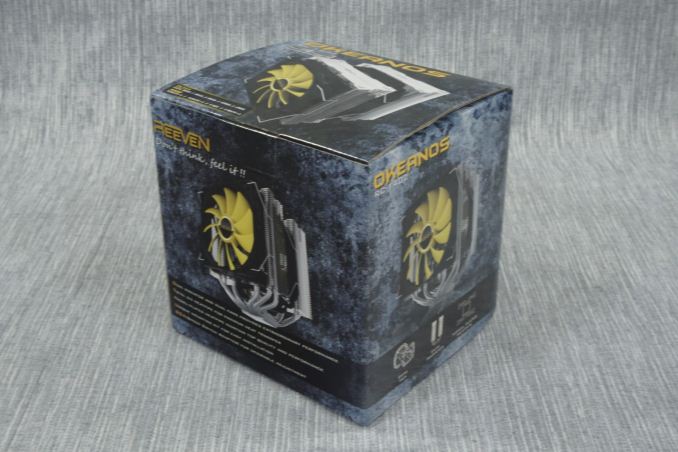
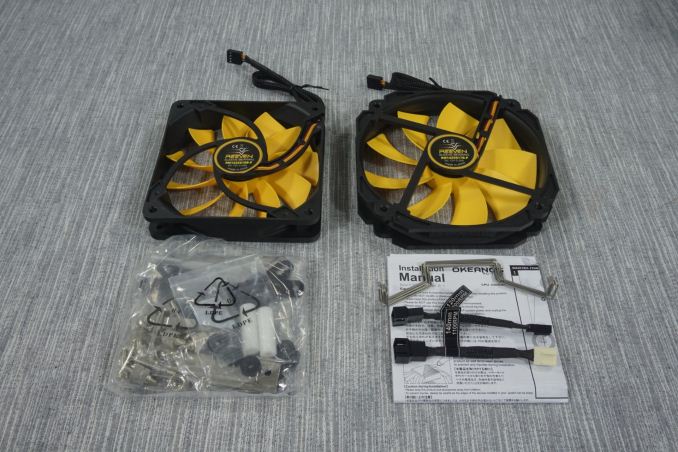
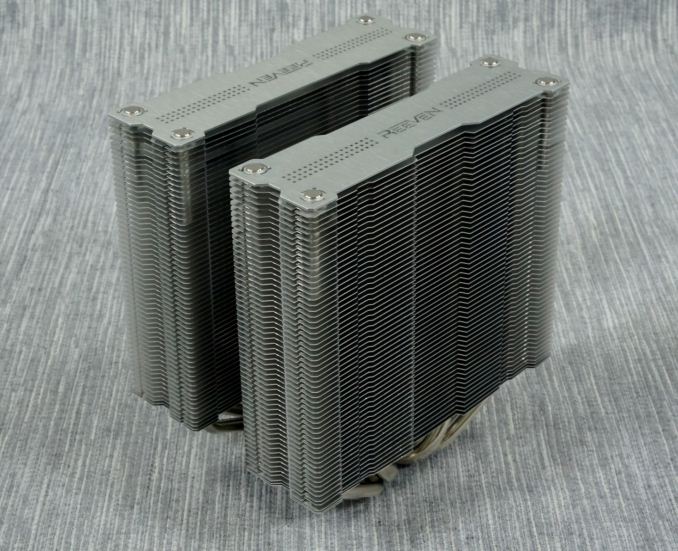
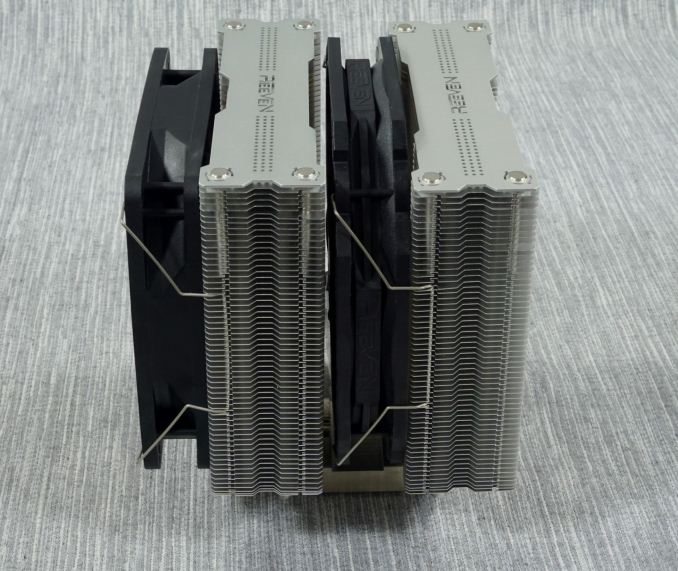
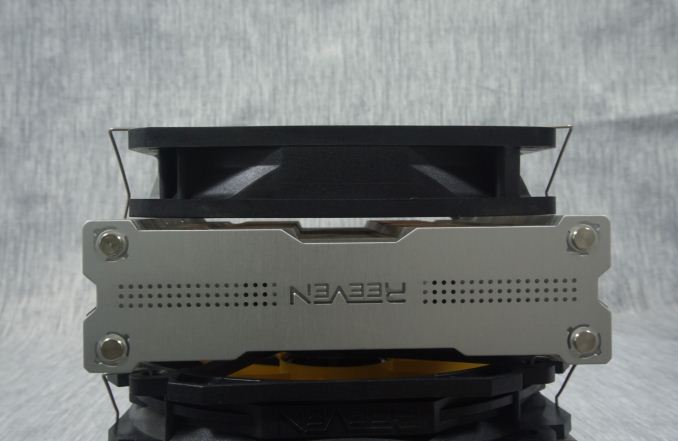
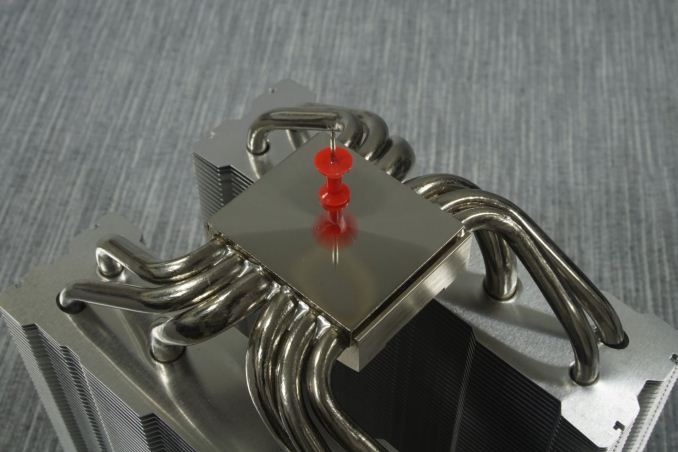








135 Comments
View All Comments
MartenKL - Monday, July 6, 2015 - link
I would of course like to see the testbed updated to have fan/s controlled by thermals, ie something like ASUS Fan Expert. Set for a target temperature and loads in the more realistic range of 15-150 watts. And of course when reducing voltage it should be via PWM and not simply reducing static voltage. The results should then be presented in temperature variance and noise levels/profile.MrSpadge - Monday, July 6, 2015 - link
Good suggestions. I hate those charts with "full fan voltage" and "fan voltage reduced to ..". What I really care about is "how silent can the cooler be for a given temperature / cooling performance?" And "which one cools better at similar noise level".It doesn't help much to see a strong fan with inbearable noise in those charts. Even if someone is interested in such solutions - wouldn't his question rather be "which heatsink performs best with this high-speed fan"? Which would again be something he couldn't answer from this data.
I know making noise based comparisons is difficult. But the raw sound pressure could be accompanied by some subjective remarks regarding the noise spectrum.
Cookiespy - Monday, July 6, 2015 - link
It would be interesting to see how the stock coolers compare to this high performance cooler. I wouldn't pay $80-100 just to see 5degrees improvement.Eidigean - Monday, July 6, 2015 - link
Chips big enough to need these coolers, such as Socket 2011, do not come with stock coolers.meacupla - Monday, July 6, 2015 - link
The stock heatsink cools great and is pretty silent with stock settings in a case with decent airflow, end of story.These kinds of $80 heatsinks are what you want when you overclock, but with the same or lower noise levels.
If you don't overclock, then a $20~25 heatsink can do a 5~20C improvement and keep the computer quieter at the same time too.
Eidigean - Monday, July 6, 2015 - link
What are you, a shill for Intel? The Intel stock heatsinks are the absolute worst. Check out the graphs from this Anandtech article:http://www.anandtech.com/show/6830/cpu-air-cooler-...
Dead last in performance AND noise. Stock heatsink was greater than 30 degrees C hotter, and 20 decibels louder.
meacupla - Monday, July 6, 2015 - link
It says right there in the system specs used to test those coolers..."Intel Core i7-2700K overclocked to 4.4GHz @ 1.4V"
I'm surprised the stock intel heatsink was able to complete the tests.
meacupla - Monday, July 6, 2015 - link
no wait, look, it says the stock heatsink and a low profile heatsink failed on an overclocked i7.Like I said, stock intel heatsink, especially the one with a copper core, works great at stock speeds.
Azurael - Friday, July 17, 2015 - link
I don't know if the stock HSFs have changed since Sandy Bridge, but my 2500k would hit 98+ degrees and throttle under AVX loads with the pathetic little stock thing whilst sounding like a small tornado had developed inside my case (how is it that a 95w CPU comes with an HSF half the size of the ones they used to ship with 65w C2Ds?!)Whichever cheap tower cooler I replaced it with does the job just fine, though. It's been running like a champ at 4.5GHz for near enough 4 years now. (I think it's a Xigmatek SD1283 - I haven't even taken the side off my machine for over a year, those heady days of tinkering and yearly upgrades long since passed.)
bug77 - Monday, July 6, 2015 - link
What, no mention of the weight of each cooler? I think that's a rather important aspect.